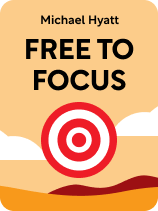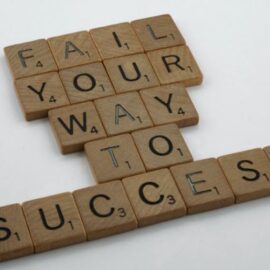

This article is an excerpt from the Shortform book guide to "Free to Focus" by Michael Hyatt. Shortform has the world's best summaries and analyses of books you should be reading.
Like this article? Sign up for a free trial here.
Do you want to create a Productivity Matrix, but don’t know where to start? What types of tasks require you to work harder?
In Free to Focus, Michael Hyatt offers a Productivity Matrix that helps you evaluate tasks based on two criteria: interest and skill. Organizing your tasks this way will help you determine how much work is needed to accomplish each task.
If you want to create your own Productivity Matrix, keep reading for an easy guide.
Creating Your Productivity Matrix
Hyatt’s Productivity Matrix helps you evaluate tasks based on two criteria: interest and skill. Interest means that a task invigorates you—thinking about it gets you excited, and working on it makes you feel energized rather than drained. Skill represents your ability to get results: A task you’re skilled at is one that you can do correctly and efficiently.
(Shortform note: Hyatt presents interest and skill as two separate criteria, but it’s much easier to develop skills related to things that you’re interested in. In Feel-Good Productivity, productivity expert Ali Abdaal emphasizes that working on exciting and meaningful tasks not only empowers you to be more productive, it also makes you think more creatively. That creativity, in turn, helps you solve problems and overcome challenges. In other words, interest doesn’t just make you want to become more skilled, it also makes you more capable of doing so.)
Your Productivity Matrix template should end up looking something like this:
| “When it comes to this task, I am…” | Not interested | Interested |
| Not skilled | Grind Zone | Inefficiency Zone |
| Skilled | Tedium Zone | Productivity Zone |
Note that there are four distinct zones your activities can fall into:
1. The Grind Zone contains tasks you neither enjoy nor excel at. These are things that simply drain your energy and waste your time.
2. The Tedium Zone is for activities that you’re skilled at but lack enthusiasm for. These are the tasks that you tend to get stuck with just because you’re good at them.
(Shortform note: If you find yourself stuck working on tasks in these first two zones, you may be able to boost your interest by finding ways to make them either more or less challenging. This is because how difficult something is for you can have a large impact on how much you enjoy it. As James Clear writes in Atomic Habits, the most engaging kind of task tends to be one that you can succeed at about half of the time—if it’s too much easier you’ll get bored, and if it’s too much harder you’ll get frustrated. So, for an activity in your Grind Zone, you might try asking for advice or finding a helpful tool to make it easier. Conversely, for an activity in your Tedium Zone, you might try setting challenges like seeing if you can finish it in a certain time limit.)
3. The Inefficiency Zone encompasses tasks you love doing but aren’t particularly good at. This zone can be dangerous because your passion might blind you to your lack of skill, leading you to waste a lot of time that you could have spent more productively. However, note that tasks in this zone can move into your Productivity Zone if you become more skilled at them. This potential to improve means it’s not necessarily bad to work on Inefficiency Zone tasks, just be mindful of why you’re doing those tasks and how long you’re spending on them.
(Shortform note: Hyatt says that spending time on tasks in this zone is a poor use of your time, or (at best), a way to improve your skills. However, that mentality is likely to lead to exhaustion and burnout—it implies that hobbies and other fun activities are only worth doing if you’re good at them. In Feel-Good Productivity, Ali Abdaal warns against this “side hustle” mindset, because indulging in your hobbies is a crucial way to rest and restore your mental energy, thereby preventing yourself from burning out. However, if you turn opportunities for fun into more work, doing those once-enjoyable activities will increase your risk of burnout rather than lowering it.)
4. The Productivity Zone is for tasks that you’re both interested in and skilled at doing. This is where you can accomplish the most work in the least time. Also, note that personal activities (like spending time with loved ones, and taking time for rest and recreation) are just as important as work, making them good candidates for this zone.
(Shortform note: Applying the Productivity Matrix to non-work activities may seem strange—for instance, what does it mean to be “skilled” at spending time with your friends? In The Courage to Be Happy, the authors offer one possible answer. While discussing the importance of giving back to your community, they note that contributing doesn’t always mean concrete acts like making donations and volunteering. You can improve the lives of people you’re with in some small way just by being yourself and spending time with them. In this context, being “good at” a hobby or social activity simply means that people are happy to have you there.)

———End of Preview———
Like what you just read? Read the rest of the world's best book summary and analysis of Michael Hyatt's "Free to Focus" at Shortform.
Here's what you'll find in our full Free to Focus summary:
- How you can achieve more by doing less
- How to use the Productivity Matrix tool to evaluate the value of things you do
- The three areas of your life that you should automate to lessen your mental load






